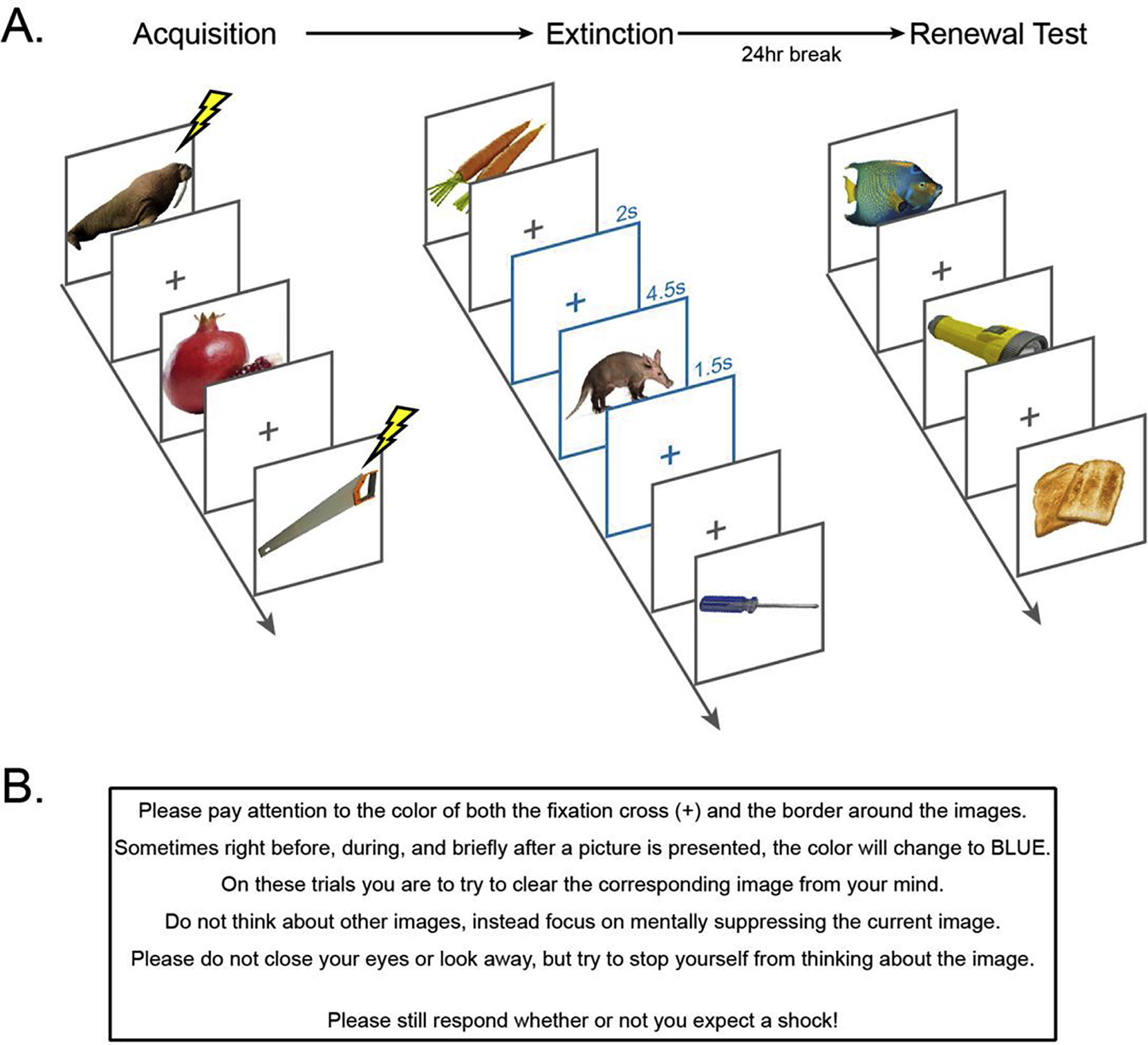Figure 1.

Experimental Procedure. A. Multi-day associative threat learning and extinction paradigm. During threat acquisition, two CS+ categories (animals and tools) co-terminated with a mild electric shock. Food stimuli served as the CS− and were never paired with shock. Extinction learning followed acquisition. During extinction, one CS+ category (animals or tools, counterbalanced across participants) was presented with the suppress cue on every trial (CS+S). The suppress cue was indicated by the color of the image border and fixation cross changing from grey to blue. 24 hours later, shock electrodes were re-attached and participants underwent a renewal test using novel images from each CS category. B. Thought suppression instruction. The instructions were designed to encourage direct thought suppression, and to discourage thought substitution. These instructions were only given to participants in Experiment 1; participants in Experiment 2 received the cue on CS+S trials during extinction, but they did not receive any instructions regarding the cue.
